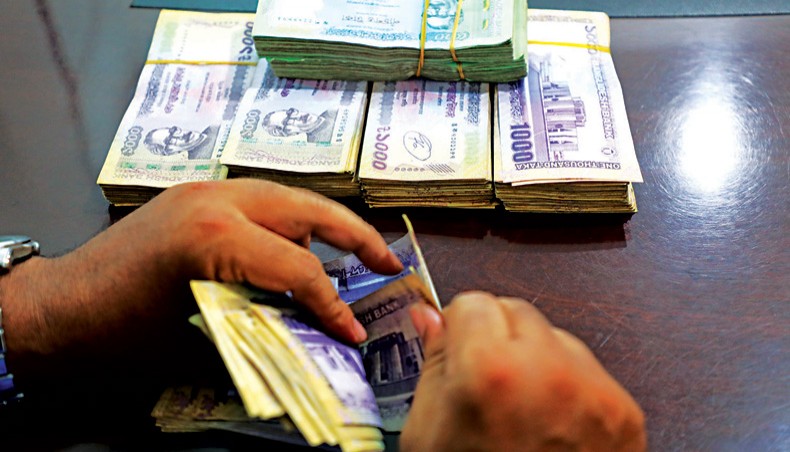
A file photo shows a man counting taka notes in the capital Dhaka. The Bangladesh Bank has provided about Tk 1 lakh crore to banks in the past five days, as the financial entities were suffering from a severe liquidity stress. — New Age photo
The Bangladesh Bank has provided about Tk 1 lakh crore to banks in the past five days, as the financial entities were suffering from a severe liquidity stress.
Experts observed that the massive lending by the Bangladesh Bank underscored the reliance of commercial banks on the central bank’s liquidity to sustain their operations.
This funding was provided through various mechanisms such as repo, liquidity support, standing lending facilities and Islamic Banks Liquidity Facility (IBLF) for Shariah-based banks.
The funds were extended at high interest rates, reflecting the urgency of the liquidity situation.
The interest rates for these facilities ranged from 6.75 per cent to 9.75 per cent per annum.
The central bank’s data showed that more than 20 banks were availing themselves of this liquidity support daily.
On December 21, the Bangladesh Bank provided the highest single-day lending in 11 years, amounting to Tk 24,615 crore, indicating the severity of the liquidity crisis.
On Sunday, the central bank provided a total amount of Tk 18,794.71 crore to banks.
In auction on Sunday, 23 banks and two financial institutions received Tk 8,701 crore for a seven-day tenor repo facility, 14 primary dealer banks received Tk 8,587.98 crore for a three-day tenor liquidity support facility, one bank received Tk 270 crore for a three-day tenor standing lending facility and two banks received Tk 625 crore for a 14-day tenor Islamic banks liquidity facility.
Likewise, the BB provided Tk 19,489 crore on December 20, Tk 16,970 crore on December 19, Tk 18,410 crore on December 18 and Tk 22,710 crore on December 17 under these facilities.
Ahsan H Mansur, executive director of the Policy Research Institute, expressed concerns about this extensive lending by the central bank, likening it to money creation.
He observed that while the central bank had announced a tight monetary policy, its large-scale lending to commercial banks appeared contradictory and could have unintended economic consequences.
Mansur pointed out that some banks had become reliant on the Bangladesh Bank’s liquidity support.
He also questioned how the central bank planned to achieve its inflation target given these actions.
On December 17, the Bangladesh Bank said that it had issued warning to five Shariah-based banks, citing persistent deficits in their current account balances maintained with the central bank.
Rising non-performing loans and distressed assets, the government borrowing and dollar sales by the central bank have contributed to the liquidity stress in the financial sector.
The Bangladesh Bank utilised the country’s foreign currency reserves, selling approximately $27 billion over the past 29 months, amid a dollar crisis in banks.
Of this amount, $5.8 billion was allocated to banks in July-November of FY 2023-24, $13.5 billion in FY23 and $7.62 billion in FY22.
This process consequently absorbed an equivalent amount of the taka from the banking system, which has contributed to the prevailing liquidity pressure, bankers said.
The presence of increased levels of distressed assets, particularly non-performing loans, coupled with sluggish deposit growth, has further strained liquidity condition in the banking sector, they said.
The volume of non-performing loans in Bangladesh’s banking sector reached Tk 1,55,397 crore by the end of September.
The total distressed assets in the country’s banking sector reached Tk 3,77,922 crore, excluding loans that were unclassified by court orders, according to the central bank’s Financial Stability Report 2022.
New Age









